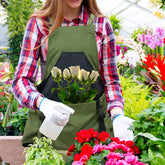What Percent Shade Cloth for Garden: Finding the Right Fit for Your Plants
Table of Contents
- Introduction
- Understanding Shade Cloth: What Is It and Why Use It?
- Types of Shade Cloth and Their Percentages
- How to Determine the Right Shade Percentage for Your Garden
- Installing Shade Cloth: A Step-by-Step Guide
- Maintenance and Care for Shade Cloth
- Conclusion
- FAQ
Gardening is a beautiful dance between nature and nurture, but even seasoned gardeners can face challenges with temperature extremes, intense sunlight, and protecting delicate plants. Knowing how to harness the sun's energy while preventing heat stress is crucial for a flourishing garden. That’s where shade cloth comes in.
Did you know that plants can experience sunburn too? Just like our skin, excessive sunlight can damage plant cells, leading to stunted growth and poor yields. As we delve into the world of shade cloth, we’ll explore the essential question: what percent shade cloth for garden is right for your unique setup?
In this guide, we will uncover the benefits of using shade cloth, how to choose the appropriate percentage based on your plants' needs and climate, and essential installation tips. By the end of this post, you will feel empowered to create the optimal growing environment for your garden, ensuring that your plants thrive while you enjoy the fruits of your labor.
Introduction
When we think of gardening, we often envision the lush blooms and bountiful harvests that come with nurturing our plants. Yet, a crucial element can often be overlooked: the impact of sunlight. In fact, studies indicate that excessive sunlight can lead to reduced plant productivity by up to 50%. This is where shade cloth can be a game-changer.
At Garden Greenland, we believe that everyone deserves to feel connected to nature, and our journey began with a passion for the earth and a commitment to redefining the home gardening experience. With premium gardening products designed for optimal performance, we aim to empower you to embrace your green thumb.
In this blog post, we will explore the significance of shade cloth in gardening, discuss the types of shade cloth available, and help you determine the right percentage for your garden based on various factors. Our goal is to provide you with comprehensive insights to elevate your gardening experience and achieve breathtaking results.
Understanding Shade Cloth: What Is It and Why Use It?
Shade cloth is a specialized fabric designed to block a certain percentage of sunlight, protecting plants from the damaging effects of excessive heat and UV radiation. It’s an essential tool for gardeners, especially in regions with intense sunlight or high temperatures.
Benefits of Using Shade Cloth in a Garden
- Temperature Regulation: Shade cloth helps to lower the temperature in your garden or greenhouse, creating a more comfortable environment for plants. By blocking a portion of sunlight, it mitigates the risk of overheating and helps prevent heat stress.
- UV Protection: Many plants are sensitive to UV rays, which can lead to cellular damage and hinder growth. Shade cloth provides an effective barrier against harmful UV radiation, ensuring that your plants remain healthy and vibrant.
- Improved Ventilation: Shade cloth allows for airflow, which is essential in preventing humidity buildup that can lead to fungal diseases. A well-ventilated environment encourages healthy plant growth.
- Water Conservation: By reducing evaporation rates, shade cloth can help retain moisture in the soil, leading to less frequent watering and more efficient water usage.
- Pest Control: Certain types of shade cloth can act as a barrier against pests, protecting your plants from unwanted visitors while still allowing air and light to penetrate.
Key Considerations When Choosing Shade Cloth
Before selecting shade cloth, it’s essential to consider several factors that will influence your decision:
- Plant Type: Different plants have varying light requirements. For instance, shade-loving plants like ferns or orchids may require higher shade percentages compared to sun-loving vegetables like tomatoes or peppers.
- Climate: Your local climate plays a significant role in determining the appropriate shade percentage. Hotter regions may require heavier shade cloth to prevent heat stress, while cooler climates might only need lighter options.
- Growing Environment: The location of your garden or greenhouse can influence the choice of shade cloth. For example, structures that receive full sun may benefit from higher shade percentages.
Types of Shade Cloth and Their Percentages
Shade cloth is available in various materials and percentages, each suited for different gardening needs. Here’s a breakdown of common types and their applications:
1. 30% Shade Cloth
- Best For: Heat-loving plants like tomatoes and peppers.
- Usage: Ideal for regions with moderate sunlight. It allows enough light for growth while providing some protection from harsh rays.
2. 50% Shade Cloth
- Best For: Most vegetables and flowering plants.
- Usage: Commonly used in gardens and greenhouses. It provides a balanced environment, allowing ample light while reducing the risk of sunburn.
3. 70% Shade Cloth
- Best For: Shade-loving plants and delicate species.
- Usage: Excellent for hot climates, this percentage significantly reduces light intensity and is suitable for ferns and some vegetables.
4. 90% Shade Cloth
- Best For: Extremely sensitive plants and unique applications (e.g., mushroom growing).
- Usage: This option offers nearly complete shade and is only recommended for specific plant types that thrive in very low light.
5. Aluminized Shade Cloth
- Best For: Commercial greenhouses and extreme heat conditions.
- Usage: Reflects sunlight and radiant heat, keeping areas cooler than traditional cloth.
How to Determine the Right Shade Percentage for Your Garden
Choosing the right percentage of shade cloth for your garden involves assessing the specific needs of your plants. Here are some guidelines to help you make an informed decision:
Assessing Plant Requirements
- Sun-Loving Plants: If you are growing plants that thrive in direct sunlight, such as tomatoes, peppers, and cucumbers, consider using 30% to 50% shade cloth. This will protect them from extreme heat while still allowing enough light for photosynthesis.
- Moderate Light Plants: For plants like lettuce, spinach, and herbs, a 50% to 60% shade cloth is ideal. This provides adequate protection from scorching sunlight while promoting healthy growth.
- Shade-Loving Plants: Ferns, orchids, and other shade-loving species typically require 70% to 90% shade cloth. This ensures they receive minimal direct sunlight, creating a suitable environment for thriving.
Evaluating Climate Conditions
- Warm Climates: If you live in an area with high temperatures and intense sunlight, lean towards higher percentages (60% to 90%) to protect your plants from heat stress.
- Cooler Climates: In regions with milder sunlight, lower percentages (30% to 50%) may suffice, allowing plants to receive the necessary light without overwhelming them.
Considering Seasonal Changes
- Adjust shade cloth percentages based on seasonal changes. For instance, during peak summer, you may want to increase shade coverage, while in cooler months, lowering the percentage or removing it altogether may be beneficial.
Installing Shade Cloth: A Step-by-Step Guide
Now that you've chosen the right shade percentage for your plants, it's time to install the shade cloth effectively. Here’s a straightforward guide to help you get started:
Step 1: Measure Your Area
Begin by measuring the dimensions of the area you want to cover. This will help you determine how much shade cloth you need.
Step 2: Choose the Right Size
Select a shade cloth size that matches or exceeds your measurements. It's better to have extra material that can be trimmed down for a perfect fit.
Step 3: Prepare the Shade Cloth
Unroll the shade cloth and lay it flat. Check for any defects or damages before installation.
Step 4: Secure the Shade Cloth
Attach the shade cloth to your structure using clips, bungee cords, or zip ties. Ensure it's tight to prevent sagging or flapping in the wind.
Step 5: Trim Excess Material
Once securely fastened, trim any excess shade cloth for a neat and tidy finish.
Step 6: Regular Maintenance
Inspect the shade cloth regularly for signs of wear or damage, and clean it as needed to maintain its effectiveness.
Maintenance and Care for Shade Cloth
To ensure your shade cloth lasts for many seasons, proper maintenance is essential. Here are some tips to keep your shade cloth in top condition:
- Regular Cleaning: Remove dust and debris at least once a year. Use a gentle detergent and a soft brush to clean, rinsing thoroughly before reinstalling.
- Inspect for Damage: Regularly check for tears or holes. Small damages can be repaired with shade cloth repair tape, while extensive damage may necessitate replacement.
- Store Properly: If you need to remove the shade cloth during certain seasons, store it in a dry and protected area to prevent damage.
Conclusion
Finding the right percent shade cloth for your garden is a crucial step in creating an optimal growing environment for your plants. By understanding the specific needs of your plants, evaluating your local climate, and following proper installation and maintenance practices, you can reap the benefits of shade cloth for years to come.
At Garden Greenland, we are committed to supporting your gardening journey with high-quality, innovative products designed to elevate your experience. Whether you are growing a small herb garden or nurturing a larger greenhouse, our premium shade cloth options will help you achieve your gardening goals effortlessly.
As you embark on your gardening adventures, consider how shade cloth can enhance your plants' health and productivity. What shade percentage will you choose, and how will you implement it in your garden? Together, let’s cultivate a thriving green space that connects us to nature.
FAQ
1. What is shade cloth made of? Shade cloth is commonly made from woven polypropylene or knitted high-density polyethylene (HDPE) materials, both offering durability and UV protection.
2. How long does shade cloth last? With proper care and maintenance, shade cloth can last up to 10-16 years. Regular inspections and cleaning can prolong its lifespan.
3. Can I use shade cloth indoors? Yes, shade cloth can be used indoors, especially in greenhouses or indoor gardening setups, to manage light levels and prevent overheating.
4. Does shade cloth need to touch the ground? No, shade cloth only needs to cover the top of the structure and can be secured at the sides to allow airflow and prevent excess heat buildup.
5. How do I choose the right color for shade cloth? The color of shade cloth affects light absorption and reflection. White shade cloth reflects light and keeps the environment cooler, while black shade cloth absorbs heat and can be beneficial in cooler climates.
6. Can I overlap shade cloth for more coverage? Yes, overlapping shade cloth can increase the percentage of shade but be mindful of ensuring adequate airflow to prevent moisture buildup.
For more premium gardening solutions, explore our Garden Tools Collection and Garden Equipment Collection at Garden Greenland. Together, we can nurture our green thumbs and transform our garden spaces.









